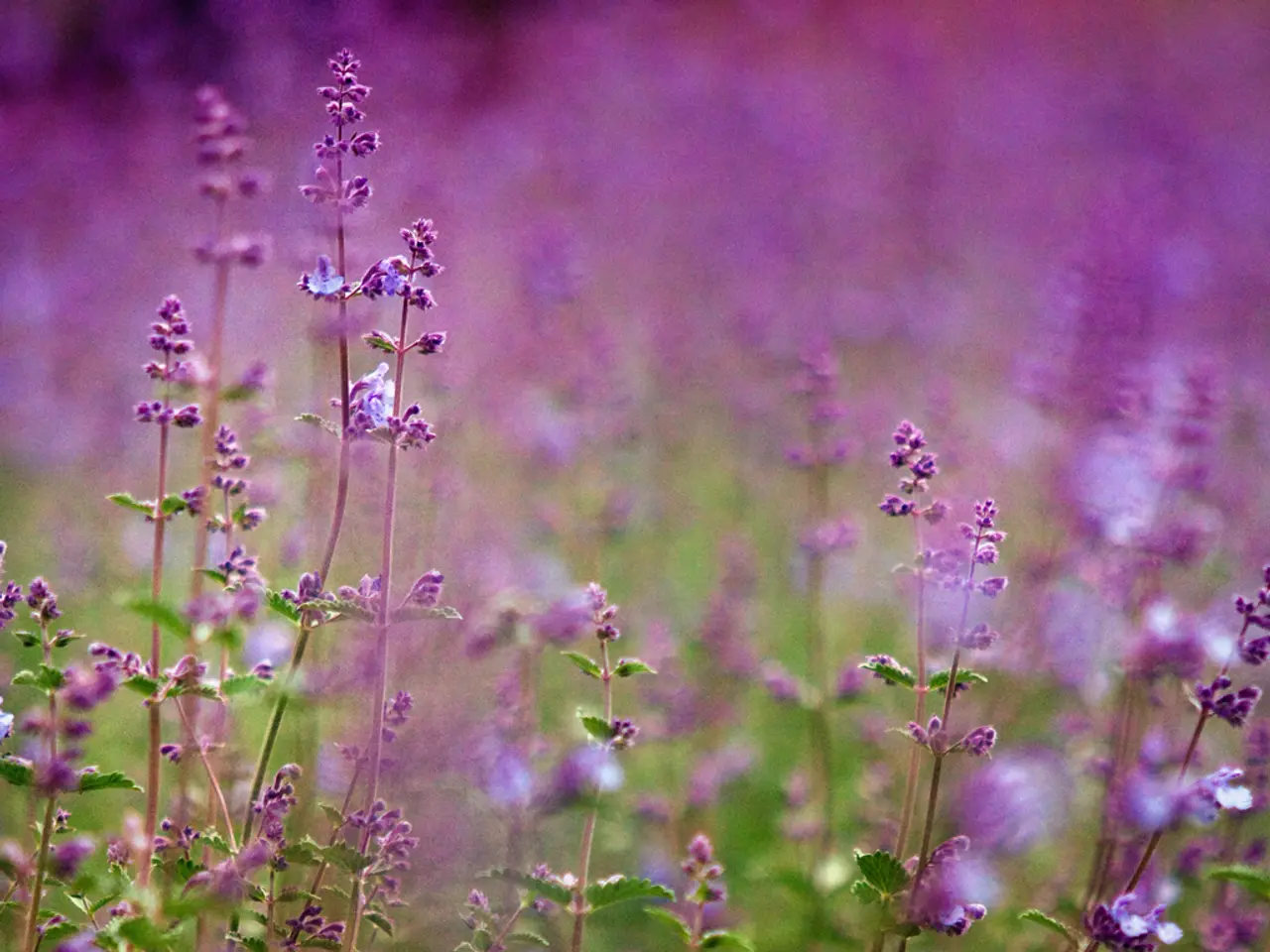The Significance of Adhering to the One-Third Rule in Current Circumstances
In the world of gardening, few plants capture the essence of summer quite like lavender. To ensure these fragrant beauties thrive and continue to delight us with their blooms, a bit of careful pruning is essential. Here's a guide to the one-third, two-thirds method, a technique that guarantees healthy, vibrant lavender plants.
Summer pruning is crucial for lavender plants. After the initial bloom, pruning encourages further flowering, prevents energy waste on seed production, and maintains plant vigor. This pruning also helps maintain a compact, healthy shape and prolongs the plant’s lifespan.
The one-third, two-thirds method in lavender pruning refers to cutting back about one-third of the green (soft) growth above the woody base while leaving at least two-thirds of the green foliage intact. This ensures the plant retains enough leaves to photosynthesize and recover effectively.
Gardeners should cut off the spent flower stalks along with approximately one-third of the green stems, keeping the rest to support healthy regrowth and future blooms. It's important to avoid cutting into older woody parts, as lavender regenerates very slowly from these or not at all.
The second prune is due in July or August, just before the flowers have fully faded. Only remove wilted flower heads and dried stems at this time.
With the right care and pruning, lavender stays healthy, attractive, and a showstopper in the garden or on the balcony. It's also worth noting that compact varieties like 'Peter Pan' (purple flowers, about 45 cm tall) and 'Coconut Ice' (white-pink flowers, about 30 cm tall) are ideal for pot culture.
When pruning, it's best to cut lavender on a dry day when the flowers are also dry to reduce mold risk. Ideally, prune lavender in the morning or evening to avoid midday heat. Lavender loves sun and dryness; water in the morning or evening, not in the midday heat, directly on the soil, not over the leaves.
Pruning lavender is necessary twice a year, once in spring and once after flowering in summer. After cutting, spread the flowers on a cloth to dry in the air for several days before using them in tea, sachets, or as a spice.
In some cases, lavender may become strongly woody, which can make pruning more challenging. In such cases, it's worth trying a radical prune, as individual shoots may regrow. However, it's essential to remember that overly woody lavender may be beyond saving.
Lastly, it's important to note that if the summer prune is done too late, frost damage can occur in winter. So, timing is key in maintaining the health and beauty of your lavender plants.
[1] Gardening Know How. (n.d.). How to Prune Lavender. Retrieved from https://www.gardeningknowhow.com/ornamental/flowers/lavender/how-to-prune-lavender.htm
[2] The Spruce. (n.d.). How to Prune Lavender: A Guide to Lavender Pruning. Retrieved from https://www.thespruce.com/pruning-lavender-1412477
Gardening enthusiasts should implement the one-third, two-thirds method when pruning lavender for sustained growth and health. After flowering, prune off spent flower stalks along with about one-third of the green stems, leaving the remaining two-thirds to encourage regrowth and future blooms.




